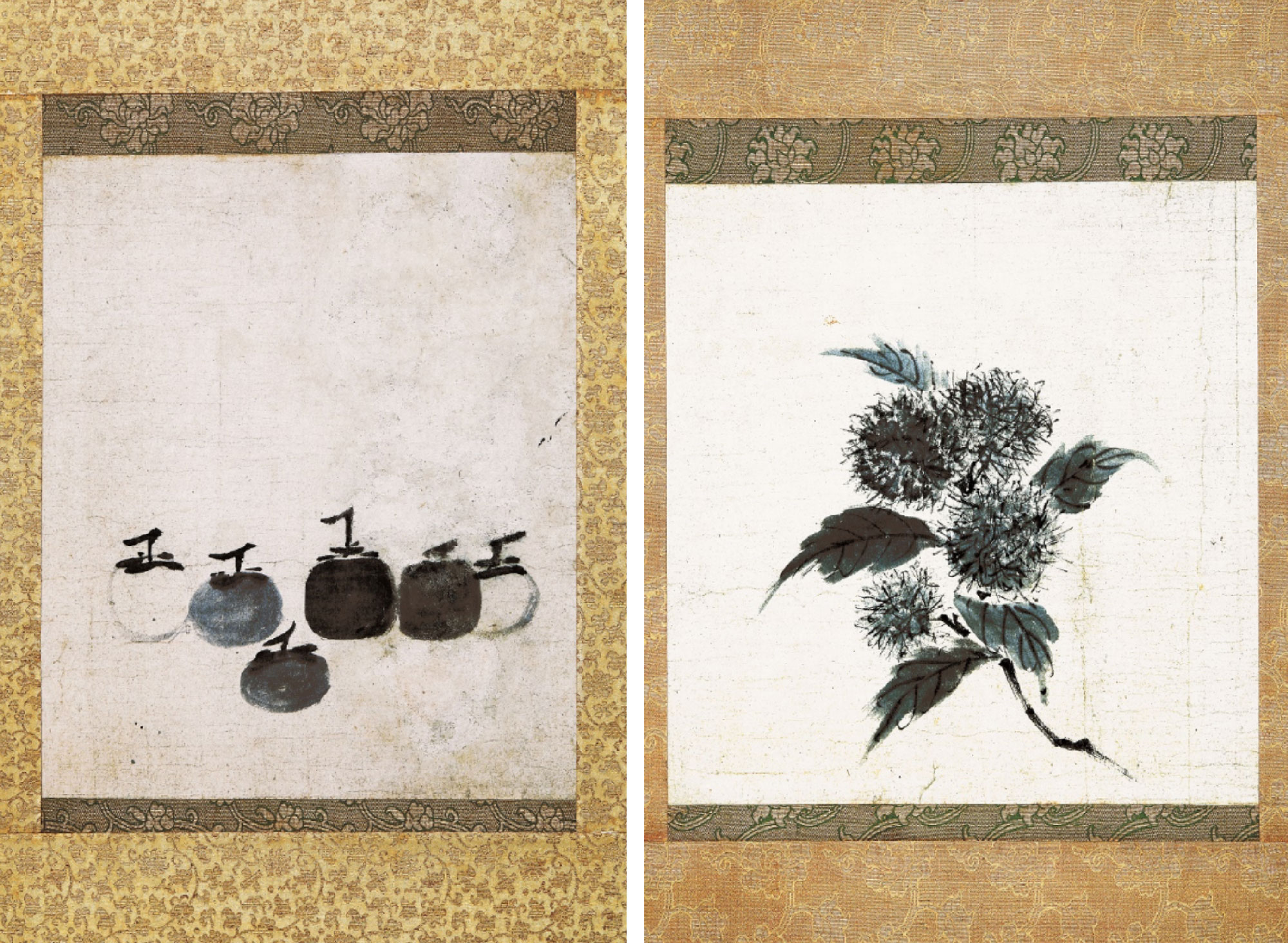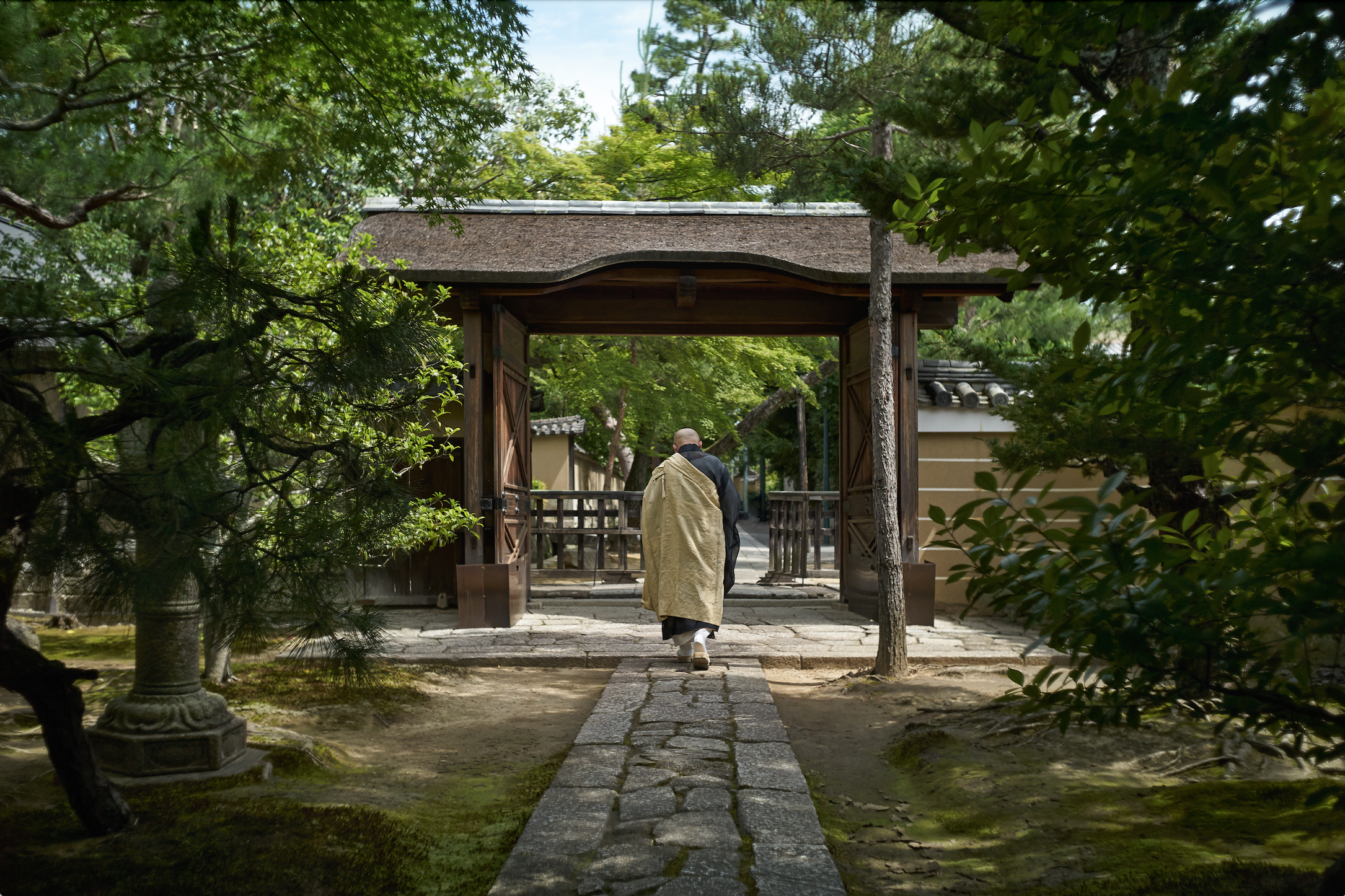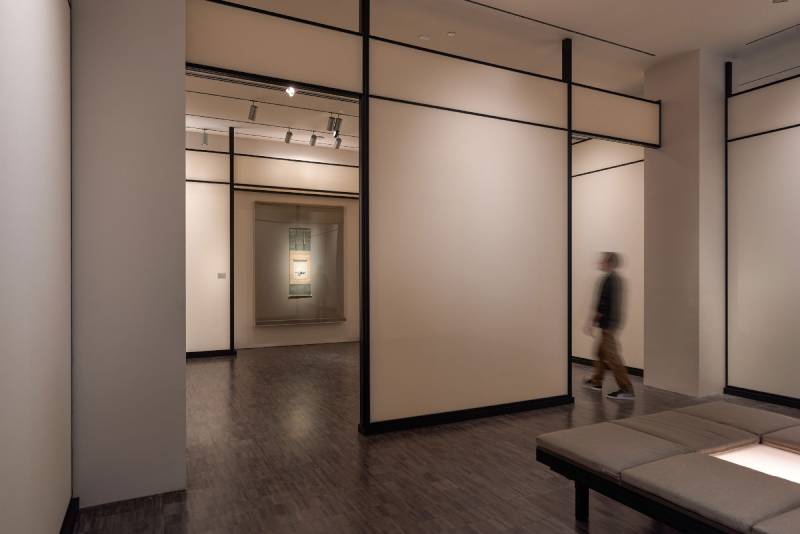At the center of the Asian Art Museum, the gallery featuring The Heart of Zen has transformed into a low-lit, contemplative space divided by a winding path of shoji walls. The hushed ambiance immediately conveys the rarity of the situation: an opportunity to view the ink paintings Persimmons and Chestnuts, both attributed to the 13th-century Chinese monk Muqi, which have made their first (and possibly only) trip outside of Japan since they were imported from China.
The paintings, which were likely cut from the same handscroll and remounted separately as hanging scrolls, will be on view for just three weeks each (with one overlapping period, Dec. 8–10), due to their delicacy and light sensitivity.

The story of how these paintings came to San Francisco from Daitokuji Ryokoin, a Zen Buddhist temple in Kyoto, begins with a 2017 visit to the museum from Abbot Kobori Geppo, who initiated the loan. In exhibition wall text, the abbot explains the rationale for The Heart of Zen, the show that ultimately materialized after years of pandemic delays: “My wish is to bring even a fragment of / pure, transparent air from Ryokoin / In times of joy or sorrow, / In the world of tranquility and chaos / Or in the midst of peace or war / We [monks at Ryokoin] are living right in the center of Zen, from morning to the night.”
Some of that pure, transparent air is visible in a photo slideshow that projects on a gallery wall, providing images of life at the temple and of Persimmons and Chestnuts in situ, during a rare moment of display. For museum curators Laura Allen and Yuki Morishima, this exhibition provides an opportunity to reexamine the enormous legacy of these paintings, which have been identified, especially by 20th-century Western scholars, as “preeminent examples of Zen artworks.”
The 1922 book Zen Buddhism and Its Relationship to the Arts by the British writer and translator Arthur Waley (who never traveled to Japan or China himself) was the first of many Western texts that connected Persimmons with a state of spiritual awareness. Over decades, the painting became a visual metaphor for “Emptiness.”

But more recent scholarship has engaged with the still lifes’ historic and contemporary role in Zen monastic life, where they exist alongside other decorative and functional objects, like priest portraits and tea wares. As the exhibition’s wall text states, “We have moved beyond the notion that minimalist compositions, monochrome ink and spontaneity mirror the ‘Zen mind.’”



